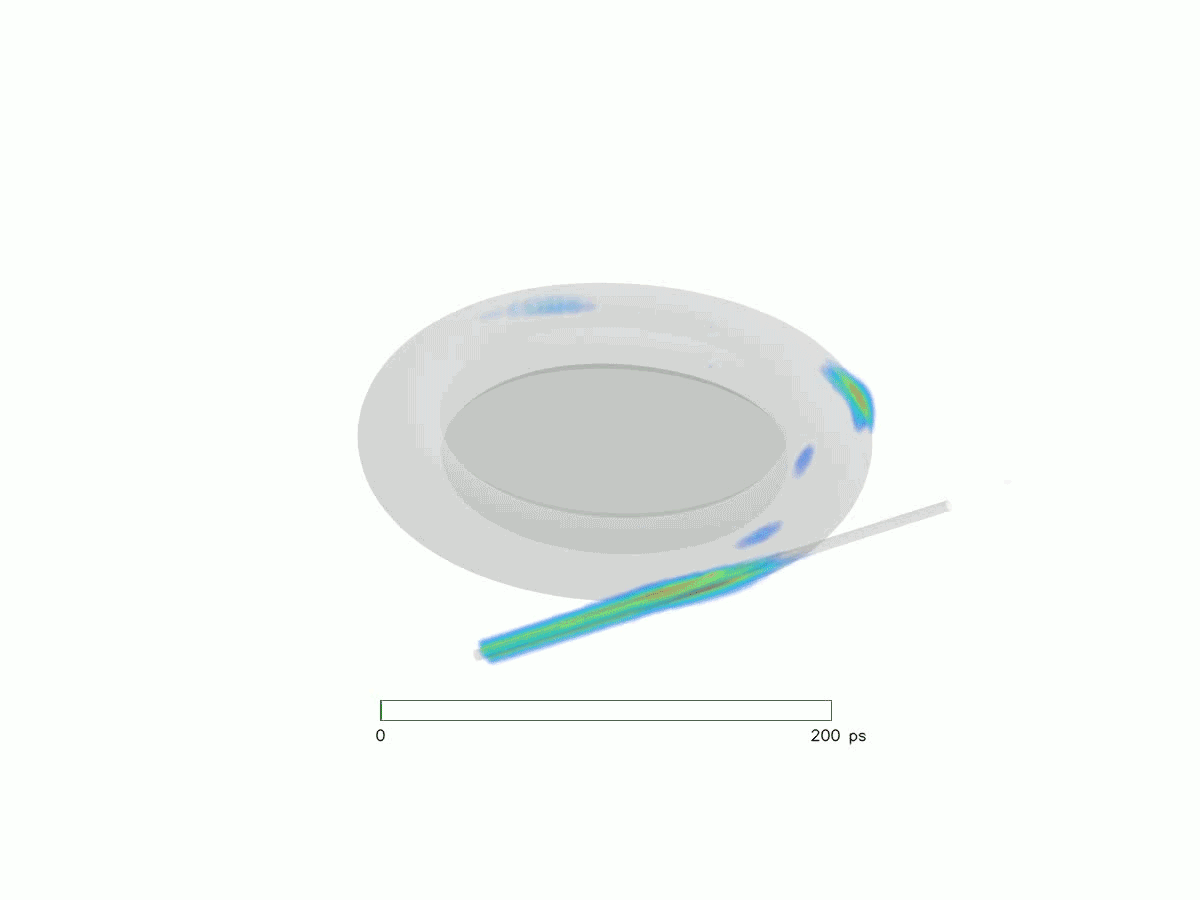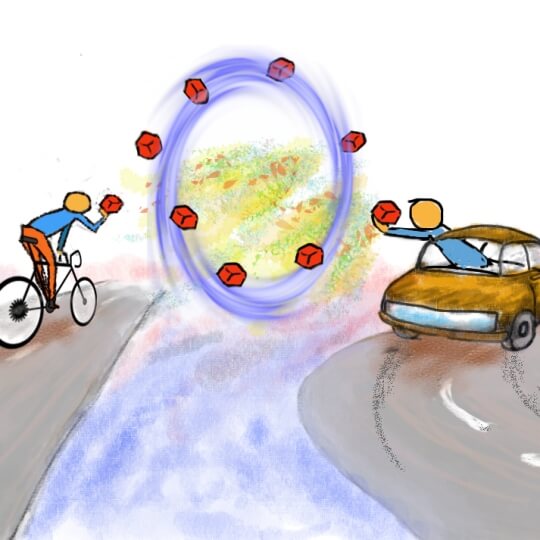News
Coupling the optical fields from waveguides to the optical fields in whispering galleries in photonic circuits is like trying to transfer a package between a bike and a car on a highway. But, with chaos, the photons could be efficiently delivered to the optical mode. (Illustration courtesy of Yin Feng and Xuejun Huang)
Integrated photonic circuits, which rely on light rather than electrons to move information, promise to revolutionize communications, sensing and data processing. But controlling and moving light poses serious challenges. One major hurdle is that light travels at different speeds and in different phases in different components of an integrated circuit. For light to couple between optical components, it needs to be moving at the same momentum.
Now, a team of researchers at the Harvard John A. Paulson School of Engineering and Applied Sciences, in collaboration with Peking University in Beijing, has demonstrated a new way to control the momentum of broadband light in a widely-used optical component known as a whispering gallery microcavity (WGM).
The paper, whose co-authors also include researchers from Washington University in Saint Louis, the California Institute of Technology, and the University of Magdeburg, is published in Science.
“The broadband optical chaos in a microcavity creates a universal tool to access many optical states,” said Linbo Shao, a graduate student in the lab of Marko Loncar, the Tiantsai Lin Professor of Electrical Engineering, at SEAS and co-first author of the paper. “Previously, researchers needed multiple special optical elements to couple light in and out WGMs at different wavelengths, but with this work we can couple all color lights with a single optical coupler.”
A WGM is a type of optical microresonator used in a wide variety of applications, from long-range transmission in optical fibers to quantum computing. WGMs are named for the whispering galleries of St. Paul’s Cathedral in London, where an acoustic wave (a whisper) circulates inside a cavity (the dome) from a speaker on one side to a listener on the other. A similar phenomena occurs in the Echo Wall in the Temple of Heaven in China and in the whispering arch in Grand Central Station in New York City.
Optical whispering galleries work much the same way. Light waves trapped in a highly-confined, circular space — smaller than a strand of hair — orbit around the inside of the cavity. Like the whispering wall, the cavity traps and carries the wave.
However, it is difficult to couple the optical fields from waveguides to the optical fields in whispering galleries in photonic circuits because the waves are traveling at different speeds.
Think of a WGM as a highway roundabout and optical fields as UPS trucks. Now, imagine trying to transfer a package between two trucks while both are moving at different speeds. Impossible, right?

(Left) Without the chaos, coupling photons to an optical mode is inefficient. (Right) With the chaos, the photons could be efficiently delivered to the optical mode. (Artwork by Yin Feng and Xuejun Huang)
In order to solve for this difference of momentum — without breaking Newton’s law of the conservation of momentum — the research team created a little chaos. By deforming the shape of the optical microresonator, the researchers were able to create and harness so-called chaotic channels, in which the angular momentum of light is not conserved and can change over time. By alternating the shape of the resonator, the momentum can be tuned; the resonator can be designed to match momentum between waveguides and WGMs. Importantly, the coupling is broadband and occurs between optical states that would otherwise not couple.

By deforming the shape of the optical microresonator, the researchers were able to create and harness so-called chaotic channels, in which the angular momentum of light is not conserved and can change over time. (Image courtesy of Linbo Shao/Harvard SEAS)
The research provides new applications for microcavity optics and photonics in optical quantum processing, optical storage and more.
“The work illustrates a fundamentally different approach to probe this important class of microresonators while also revealing beautiful physics relating to the subject of optical chaos,” said Kerry Vahala, the Ted and Ginger Jenkins Professor of Information Science and Technology and Professor of Applied Physics at Cal Tech, who was not involved in this research.
Next, the team will explore the physics of optical chaos in other optical platforms and materials, including photonic crystals and diamonds.
Additional co-authors of the paper include Loncar, Qihuang Gong, Yun-Feng Xiao, Xuefeng Jiang, Shu-Xin Zhang, Xu Yi, Jan Wiersig, Li Wang and Lan Yang. The research was supported in part by the SEAS-based Center for Integrated Quantum Materials and the National Science Foundation. The computations were run on the Odyssey cluster supported by the FAS Division of Science, Research Computing Group at Harvard University.
Topics: Optics / Photonics
Cutting-edge science delivered direct to your inbox.
Join the Harvard SEAS mailing list.
Scientist Profiles
Marko Loncar
Tiantsai Lin Professor of Electrical Engineering
Press Contact
Leah Burrows | 617-496-1351 | lburrows@seas.harvard.edu




